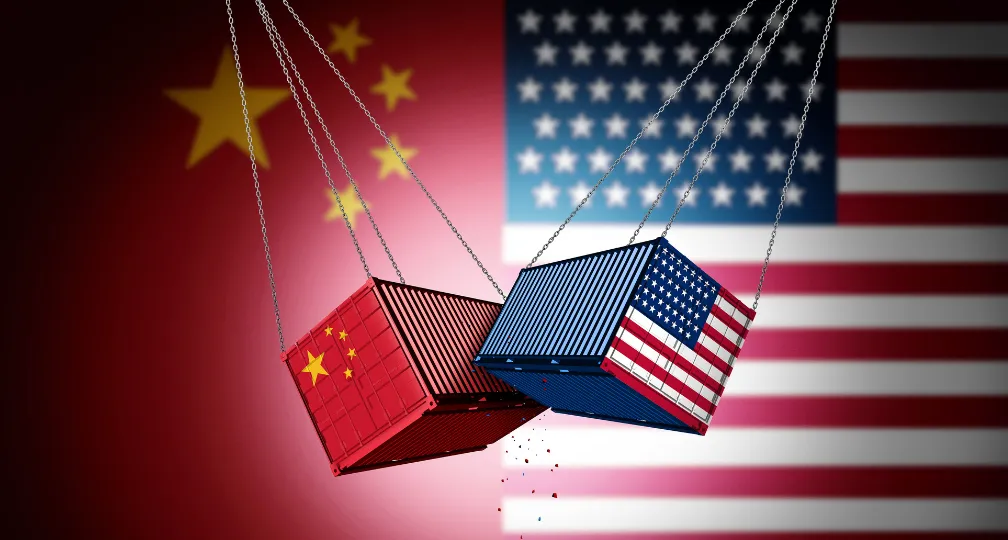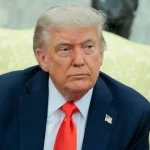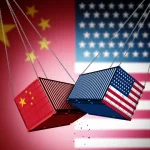The Geoeconomics of Generative AI Development Race: How Emerging Technologies Can Become National Power

Click here for the PDF of the full report (coming soon).
Click here for the summary.
As of 2025, countries around the world—most notably the United States and China—are engaged in intense competition over the development of generative AI. The race to develop cutting-edge generative AI models is no longer a matter of technological advancement alone; it has become a central arena in the contest for national power. Unlike nuclear and space technologies development during the Cold War, generative AI is not exclusively a state-led effort. Instead, it is driven primarily by private companies, with governments, universities, and investors all participating in a complex innovation ecosystem. This represents one of the defining features of today’s emerging technologies.
This report does not evaluate the technical advancement of generative AI in each country or judge individual national policies. Instead, it analyzes the AI development race through the lens of national power—examining major powers’ strategies and how they attempt to translate technological capability into geopolitical influence. Focusing on the United States, China, Europe, and Japan, it explores how generative AI can be transformed into an instrument of national power and what strategic implications arise for Japan.
Chapter 1: The United States — Maximizing a Private Sector-led Ecosystem
The United States leads the global development of generative AI with an unparalleled innovation ecosystem encompassing foundation models, computational resources, talent, and investment. Tech giants such as Microsoft, Google, and Amazon dominate every stage from R&D to service delivery, supported by massive financial and infrastructural power. While the government plays a relatively limited role, changes of administration have led to major shifts in regulation and risk-management policy. The Department of Defense is rapidly advancing military applications of generative AI; however, the U.S. still lacks a coherent model for converting technological superiority into sustainable national power.
Chapter 2: China — The “Success” and Dilemmas of an Authoritarian Approach
China pursues a state-driven strategy under the banner of technological self-reliance and self-strengthening. Its generative-AI ecosystem is characterized by strong government control and a rapidly expanding base of AI firms. While China continues to lag behind the United States in certain areas, including advanced semiconductors, China is cultivating a competitive domestic research community. The emergence of cost-efficient models such as DeepSeek reflects this progress. Yet, Beijing’s early move toward strict regulation and legal control of generative AI has created a dilemma: balancing continued innovation with centralized management to block foreign ideological influences.
Chapter 3: Europe — Can Regulation Become Power?
Europe does not match the United States and China in foundational model development and R&D capacity, but it has taken the global lead in AI regulation most comprehensively and systematically. The EU AI Act, which entered into force in August 2024, aims to safeguard European values such as human rights and privacy while using stringent rules to defend digital sovereignty and project regulatory power abroad. However, the very strictness of these regulations risks stifling innovation within the EU. Europe is continuing to seek a sustainable balance between control and creativity, exploring whether regulatory power can translate into geopolitical influence.
Chapter 4: Japan — Searching for a Strategy as a Middle Power
Japan trails the U.S. and China in foundation model development but seeks to build an AI ecosystem through public-private partnership. The government supports the private sector’s innovation by providing computational infrastructure, while universities and research institutions play complementary roles. Japan is also developing rules to ensure the safety and trustworthiness of generative AI. Nonetheless, structural constraints—limited human resources, computing capacity, and investment scale—remain severe. Japan’s ability to keep up with global advances in generative AI will significantly influence its power as a sovereign state.
Chapter 5: Comparative Insights and Policy Recommendations
The comparative analysis reveals that each nation and region have distinctive approaches to developing generative AI. It indicates the competition over generative AI is not merely about technical capabilities, but about how states combine infrastructure, finance, human capital, and institutions to convert technology into nations’ power. Secondly, among these factors, institutional design—particularly regulation—offers the greatest room for policy maneuver. However, its effectiveness as a power remains questionable, particularly when these institutions lack robust industrial and technological base. Thirdly, as foundation models are trained on natural language data, they inevitably embed values and ideologies. The diffusion of such models overseas thus represents not only a technological export, but also an export of ideas—a growing dimension of power in the generative AI era.
Based on the various strategies of each country and region, the report outlines the following strategic directions for Japan:
Policy Recommendations
(1) Choosing the Path of a “Middle Power” in Generative AI
Japan should recognize the limits of pursuing leadership comparable to the U.S. or China. Instead, it should position itself as a middle power that focuses on areas where it can exert unique influence—particularly in governance, application, and safety.
(2) Shifting from the Foundation Model Race to Strength in Applications
Competing for investment resources for foundation model development is unrealistic. Japan should redirect limited resources toward application domains such as defense, manufacturing, healthcare, and education—fields tied closely to national needs—building unique competitiveness through specialization.
(3) Sustaining Participation through Minimal Investment and Infrastructure
While such a shift in focus toward applications is necessary, it should not come at the expense of completely abandoning foundation model development. A certain level of sustained investment in foundation model research, computational infrastructure, and human-resource development remains vital for Japanese R&D organizations and private firms to stay engaged in the global ecosystem. This ensures Japan’s continued participation in international standard-setting and governance discussions.
(4) Accelerating a Regulatory Approach
Japan should enhance domestic governance frameworks to ensure safety, transparency, and accountability in the realm of generative AI. When regulation is paired with effective evaluation capabilities, it can serve as a strategic asset. This approach would allow Japan to manage the risks associated with AI while also demonstrating leadership and competitiveness in promoting trustworthiness and safety within the field of AI applications.
(5) Reconstructing a Multi-Layered International Cooperation Strategy
Tokyo must pursue domestic regulation and international norm-building in tandem. “The Hiroshima AI Process” offers one model of success. Japan should deepen ties with the EU, whose regulatory orientation is similar, while continuing technical cooperation with the U.S. and expanding partnerships with resource-constrained Asian nations to build a multi-layered cooperative framework.
(Photo Credit: blackdovfx / Getty Images)
Authors
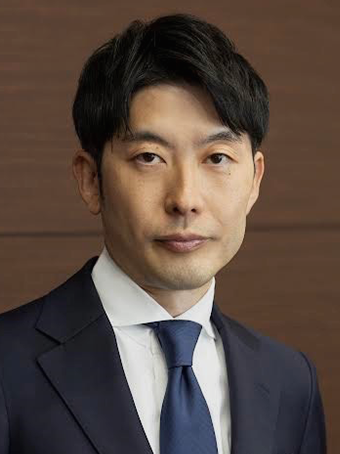
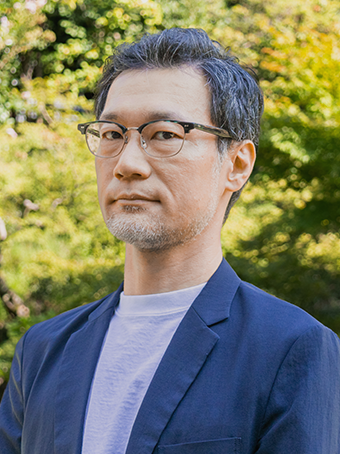
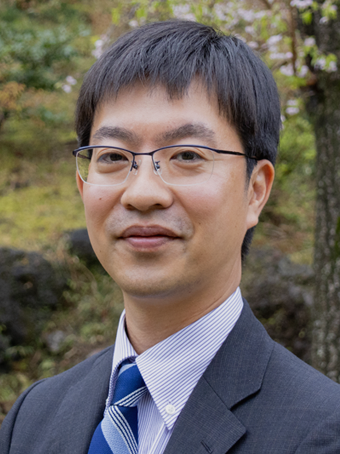

Group Head, Emerging Technologies,
Director of Management
Makoto Shiono holds a B.A. in Political Science from the Faculty of Law at Keio University and a Master of Laws (LLM) from Washington University (St. Louis) School of Law. He served as a member of the planning committee of the Intellectual Property Strategy Headquarters, Cabinet Office; the Working Group on Key and Strategic Areas, National Standards Strategy Subcommittee, Cabinet Office; and the Working Group of the Green Innovation Project Subcommittee of the Industrial Structure Council. He also participated in drafting the Ethics Guidelines (2017) as a member of the Ethics Committee of the Japanese Society for Artificial Intelligence. [Concurrent Positions] Co-Managing Director & CLO, IGPI Group Director & Managing Director, Industrial Growth Platform, Inc. (IGPI) Member, Startup Investment Committee, Japan Bank for International Cooperation(JBIC) Executive Officer, JBIC IG Partners
View Profile
Visiting Senior Research Fellow
SAITOU Kousuke is a professor at the Faculty of Global Studies, Sophia University, Japan. He received his Ph.D. in International Political Economy from the Graduate School of Humanities and Social Sciences, University of Tsukuba, Japan. Prior to joining Sophia University to teach international security studies, he was an associate professor at Yokohama National University, Japan. [Concurrent Position] Professor, Faculty of Global Studies, Sophia University
View Profile
Research Fellow
Kota Umeda is a research fellow at the Institute of Geoeconomics at the International House of Japan. From 2015 to 2025, he worked at the Japan Aerospace Exploration Agency (JAXA), where he focused on researching U.S. space policy, coordinating with other space agencies, and developing JAXA's cybersecurity policy and incident response strategies. From 2019 to 2022, Mr. Umeda served as JAXA's liaison officer in Washington, D.C., collaborating with the U.S. government, industry leaders, and various stakeholders to promote Japan-U.S. space cooperation. Prior to his career in the space sector, Mr. Umeda spent five years at the Japan Ministry of Defense, where he researched military activities surrounding Japan and contributed to the formulation of arms control and disarmament policies. He holds a Master of Laws from Kyoto University and a Bachelor's degree in Policy Studies from Kwansei Gakuin University.
View Profile-
 The Geoeconomics of Generative AI Development Race: How Emerging Technologies Can Become National Power2025.10.27
The Geoeconomics of Generative AI Development Race: How Emerging Technologies Can Become National Power2025.10.27 -
 From Decline to Surge: The Defense Industry in the Era of Excess Demand (Executive Summary)2025.10.24
From Decline to Surge: The Defense Industry in the Era of Excess Demand (Executive Summary)2025.10.24 -
 Hungary’s Electoral System: Constructing a System Favorable to the Governing Party and Its Future Prospects2025.10.20
Hungary’s Electoral System: Constructing a System Favorable to the Governing Party and Its Future Prospects2025.10.20 -
 US-China Misperceptions in the Race for Strategic Autonomy2025.10.17
US-China Misperceptions in the Race for Strategic Autonomy2025.10.17 -
 Navigating Uncertainty: India’s Quiet Strategic Moves2025.10.15
Navigating Uncertainty: India’s Quiet Strategic Moves2025.10.15
 What Comes Next after the Supreme Court Rules on IEEPA?2025.10.02
What Comes Next after the Supreme Court Rules on IEEPA?2025.10.02 Event Report: Nuclear Weapons, Eighty Years After the War and the Atomic Bombings2025.09.25
Event Report: Nuclear Weapons, Eighty Years After the War and the Atomic Bombings2025.09.25 Trump and America’s tech giants: Coexistence or collaboration?2025.10.03
Trump and America’s tech giants: Coexistence or collaboration?2025.10.03 A Looming Crisis in U.S. Science and Technology: The Case of NASA’s Science Budget2025.10.08
A Looming Crisis in U.S. Science and Technology: The Case of NASA’s Science Budget2025.10.08 US-China Misperceptions in the Race for Strategic Autonomy2025.10.17
US-China Misperceptions in the Race for Strategic Autonomy2025.10.17




